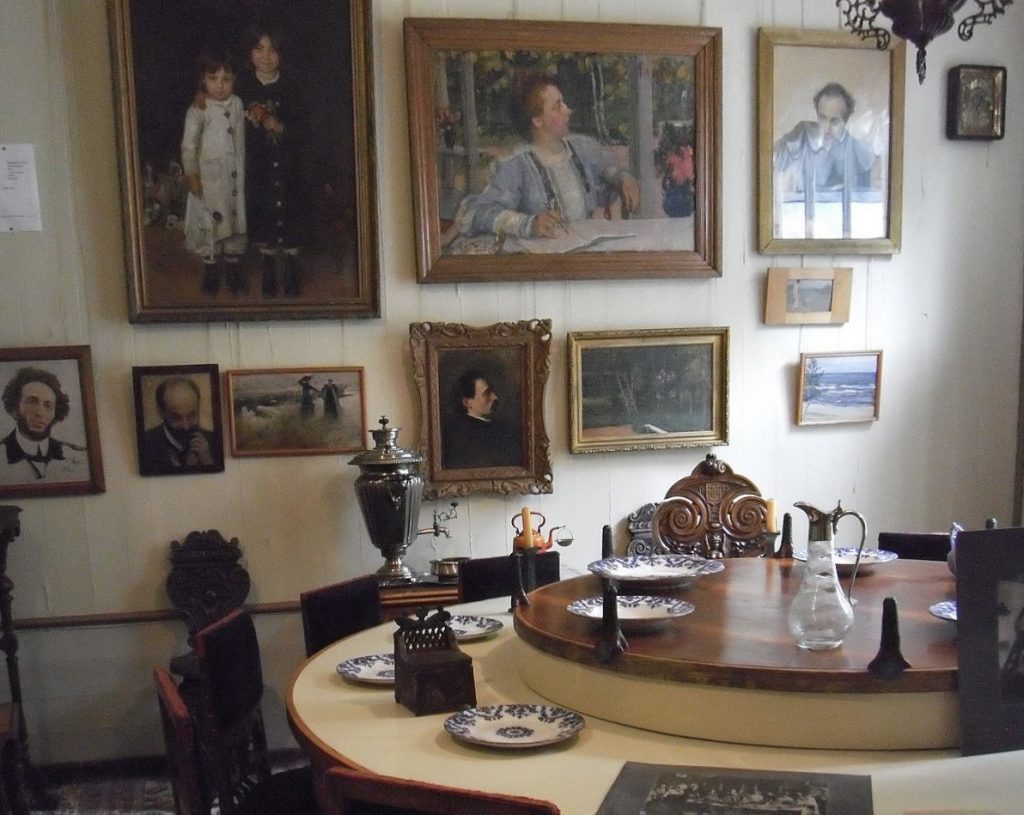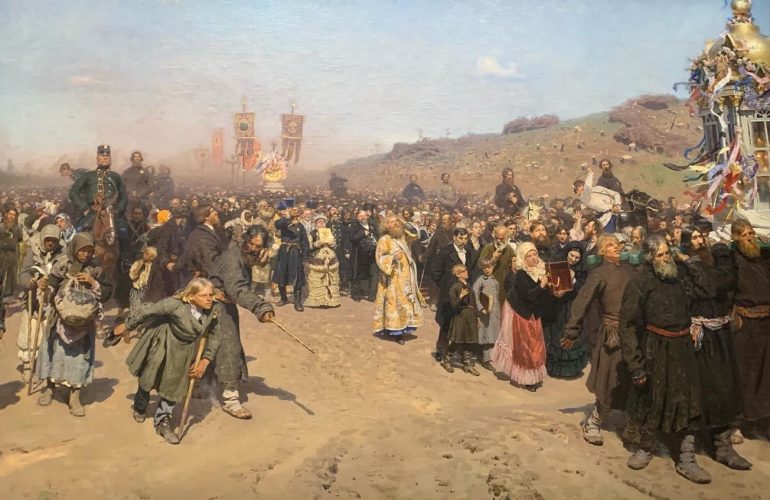Exhibition (05.10 2021-23-01 2022) “Ilya Repin (1844- 1930). Peindre L’âme Russe” at Petit Palais attracts many visitors. Artdecision online magazine offers an interpretation of Ilya Repin’s style and personality from Tretyakov Gallery expert Sophia Aksenova:
Sofia Aksenova: “For me the most appealing aspect of I.Repin’s story and personality is its modernity. How could we possibly describe his biography using modern language? It was probably his conscious desire and belief in himself (that appeared from somewhere in early childhood in conditions where, it seems, nothing favored it), that he gets the profession he dreames of and becomes an artist. An artist who made one of the five biggest names in the art of his time in Russia.
Repin is constantly learning, developing, he is interested in everything in the world and pays attention to everything: art in all its manifestations, science and all significant social events.
I recommend his book “The Far Near” as a pleasant reading for long winter evenings.
Irina Vernichenko, Artdecision: Could Repin be called an artist of the 1860s ?
SA: Repin said that he was a pupil of the 1860s. He especially points to that when telling about different people surrounding him at the Academy of Arts:
“In the mid 1860s the Academy was more open, dirty, grim, stuffy and more congested with students from all walks of life. The drawing classes didn’t have enough numbered seats, so pupils had to be seated on logs randomly laid at the very pedestal of a posing model. You’d find here anyone and everyone… There were dapper coats of rich youngsters and beggar’s rags of pale melancholics, the silent ones who kept themselves mysteriously in dark niches. In the middle by the lamp a loud literary dispute is heard, student’s speech flows freely, these are university students taking evening classes at the Academy of Arts. In the corners – shy newcomers-provincials with a timid whisper.. Two graceful aristocratic figures burst in, French phrases are heard and a fine fragrance of perfume spreads.”- I.Repin, “The Far Near”.
It seems that in his art the “critical Realism” (with all the reservations of the use of this term), which is usually used when talking about art of 1860-1870, has transformed into something else: the pathos of denunciation has been lost, an emphasis was on the personality of the characters.
IV: What is you understanding of Repin’s style? Is it Realism or an impression of a staged life?
SA: It seems that art studies will soon require a revision of the term “Realism”. Therefore, I propose to approach this question from another angle. Let’s look at some artistic methods that help Repin create such convincing and compelling images, and also at those examples of “unreal” images.
We know that Repin thoroughly prepared for the creation of his art works. To draw “Barge Haulers on the Volga”, he got acquainted with haulers, lived nearby and socialized with them. In order to create historical characters (Princess Sophia, others), he studied historical sources, traveled to historical places, met with experts, searched for relevant images for his heroes amidst his real-life acquaintances. To draw a wonderful underwater world he visited European aquariums and studied marine life. This tells us that there is a huge systematic work behind each character. And “reality” (historical accuracy) here becomes an instrument of artistic persuasiveness.
In some of Repin’s ouvres one can see an interchange between the real and unreal which could be explained by a strong influence of historical events and personal emotional perception by the artist. Let’s look at “Manifestation” of 1905 (private collection) and portraits of Leo Tolstoy “On the Other side of Life”.
IV: What is the main core of Repin’s works in your opinion? What are your favorite ouvres?
SA: I would draw your attention to particular groups of paintings, that he is working on at the same time:
“Barge Haulers on the Volga”, (1870-1873. Russian Museum) and “Resurrection of the Daughter of Jairus”, (1871, Russian Museum)
“Paris Cafe”, (1874–1875, Magma) and “Sadko”, (1876, Russian Museum)
“Ivan the Terrible and his Son Ivan”, (1581-1885, Tretyakov Gallery) and “Reception of Volost Elders by Emperor Alexander III in the Courtyard of the Petrovsky Palace in Moscow”, (1886, Tretyakov Gallery), “They did not Expect Him” (1884-1888, Tretyakov Gallery)
“Golgotha”, (1921-1925, Princeton University Museum) and “Dance of the Cossacks of Zaporozhye”, (1926-1930, Private collection)
IV: Please tell our readers about Repin’s relationships with his colleagues.
SA: Repin was one of the most sociable artists of his time, and his circle was not only painters and sculptors. These are some of his “roles”: a student and a pensioner of the Academy of Arts, a member of the “Partnership of Traveling Art Exhibitions”, a teacher at the drawing school of Princess Tenisheva, professor of the Academy of Arts, and a hospitable host of “Penates” with its receptions on Wednesdays.


